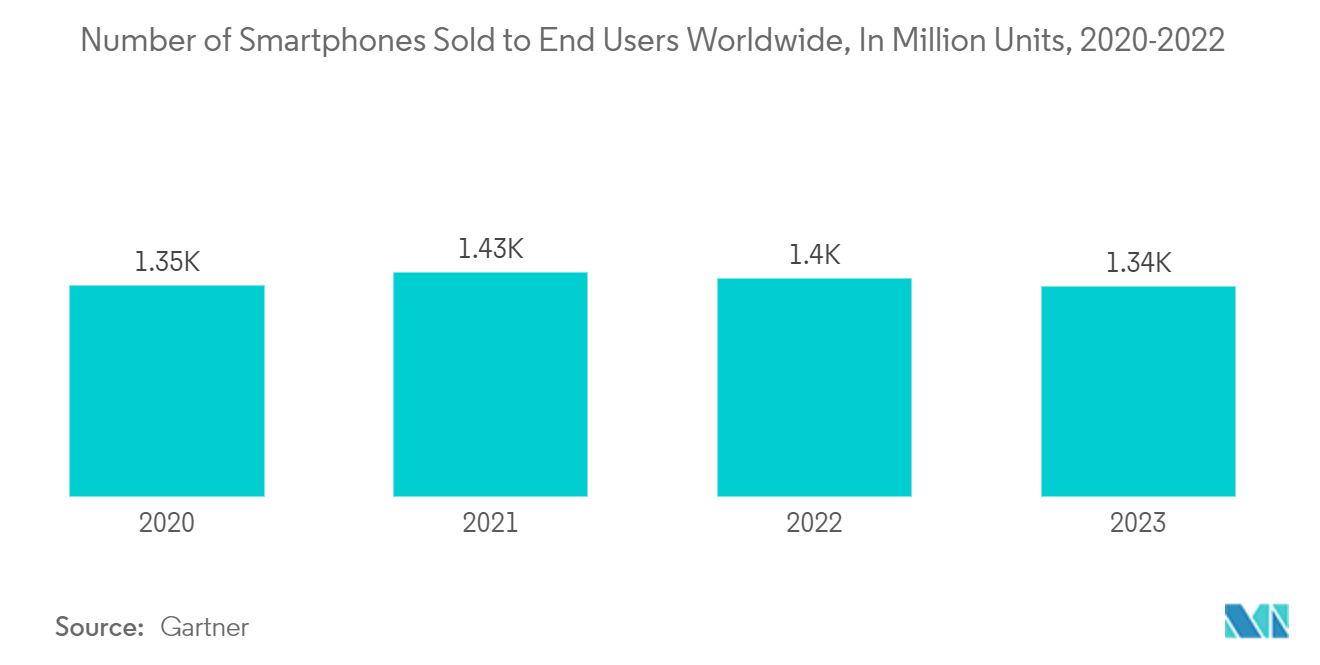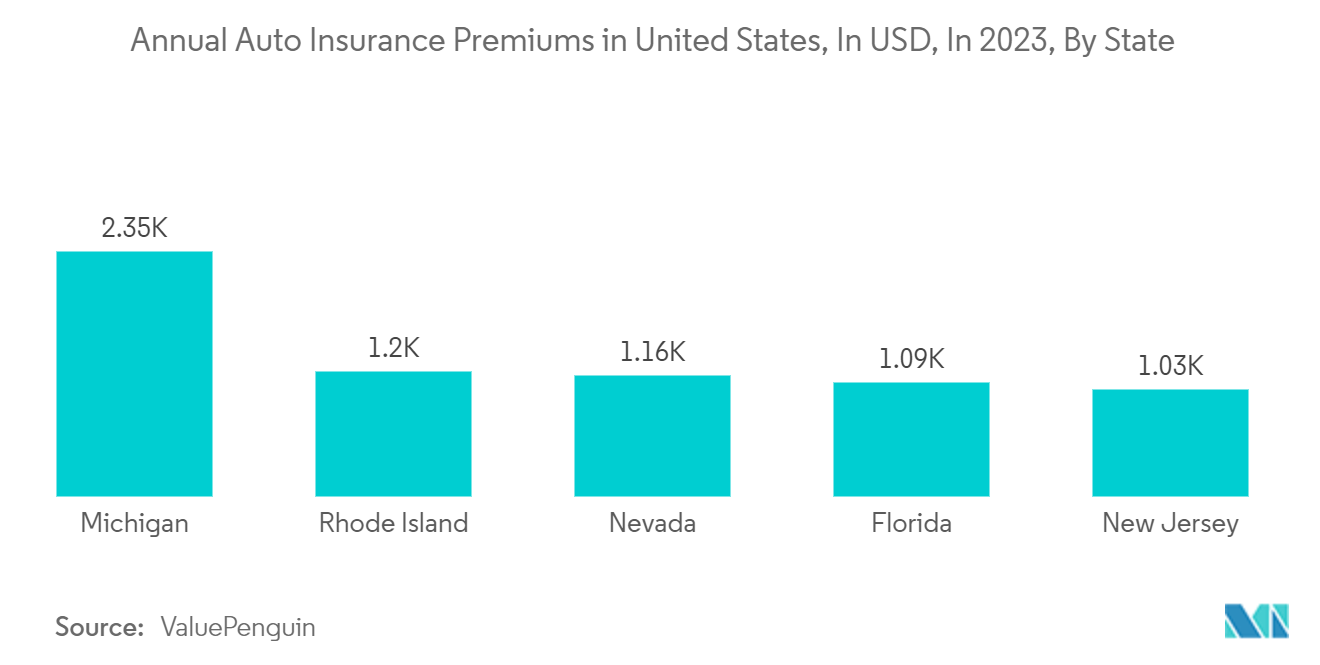Market Trends of Usage-Based Insurance (UBI) Industry
Rise in Smartphone Penetration is Fuelling the Market
Mobile telecommunication technology is the latest tool in telematics, with smartphones working as stand-alone devices or linked to vehicle systems to transmit various information to and from the car. Smartphones are an ideal telematics solution as they are typically equipped with multiple relevant sensors, such as GPS, accelerometers, and gyroscopes. They also have extensive data storage capacity, or infinite with the cloud, and superior communication capabilities. There are no device, installation, or data connectivity costs to the insurers with smartphone-based UBI programs. Smartphone computing power allows a big part of the data processing on the device, helping to lower data handling and storage costs. The extensive manufacturing volumes for smartphones exploiting economies of scale make the price–performance metric of the technical capabilities of the smartphone superior to many rivals, and it is still continuously improving over time.

Increasing Usage-based Car Insurance Accelerates in North America
The insurance industry is rapidly shifting from standard auto insurance to premium auto insurance plans driven by telematics data. Usage-based insurance, or UBI, has been gaining support in the US and has recently become increasingly difficult to ignore. About 20 million of the 875 million motor insurance plans in force last year were usage-based, according to Ptolemus, a mobility-focused research and strategic consulting organization with headquarters in Brussels. The auto insurance industry, too, has undergone a transformative shift in the United States with the advent of Usage-Based Insurance (UBI). This innovative approach to underwriting auto policies leverages telematics technology to collect real-time data on individual driving behaviors, allowing insurers to tailor premiums more accurately and reward safe driving habits.


